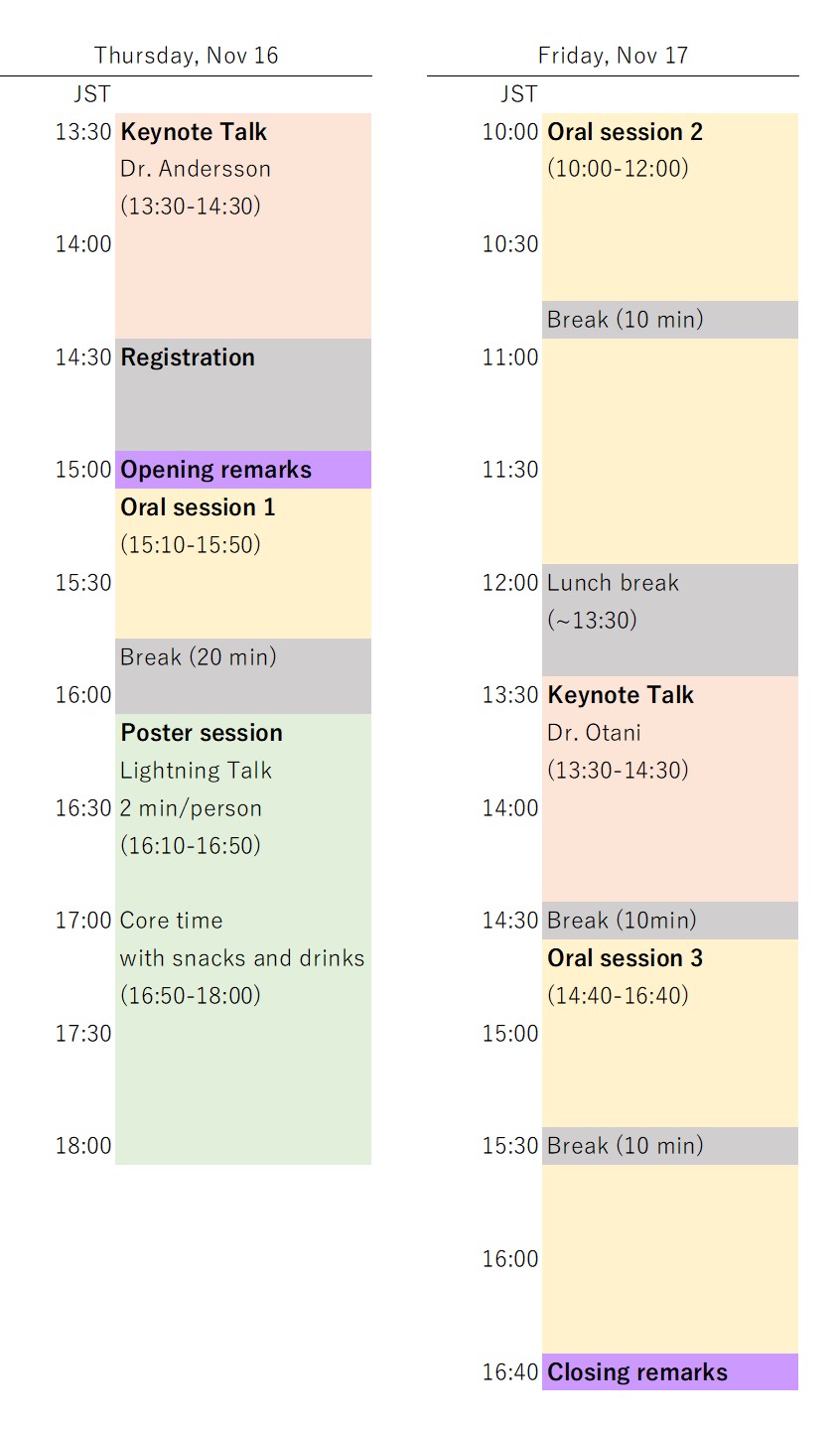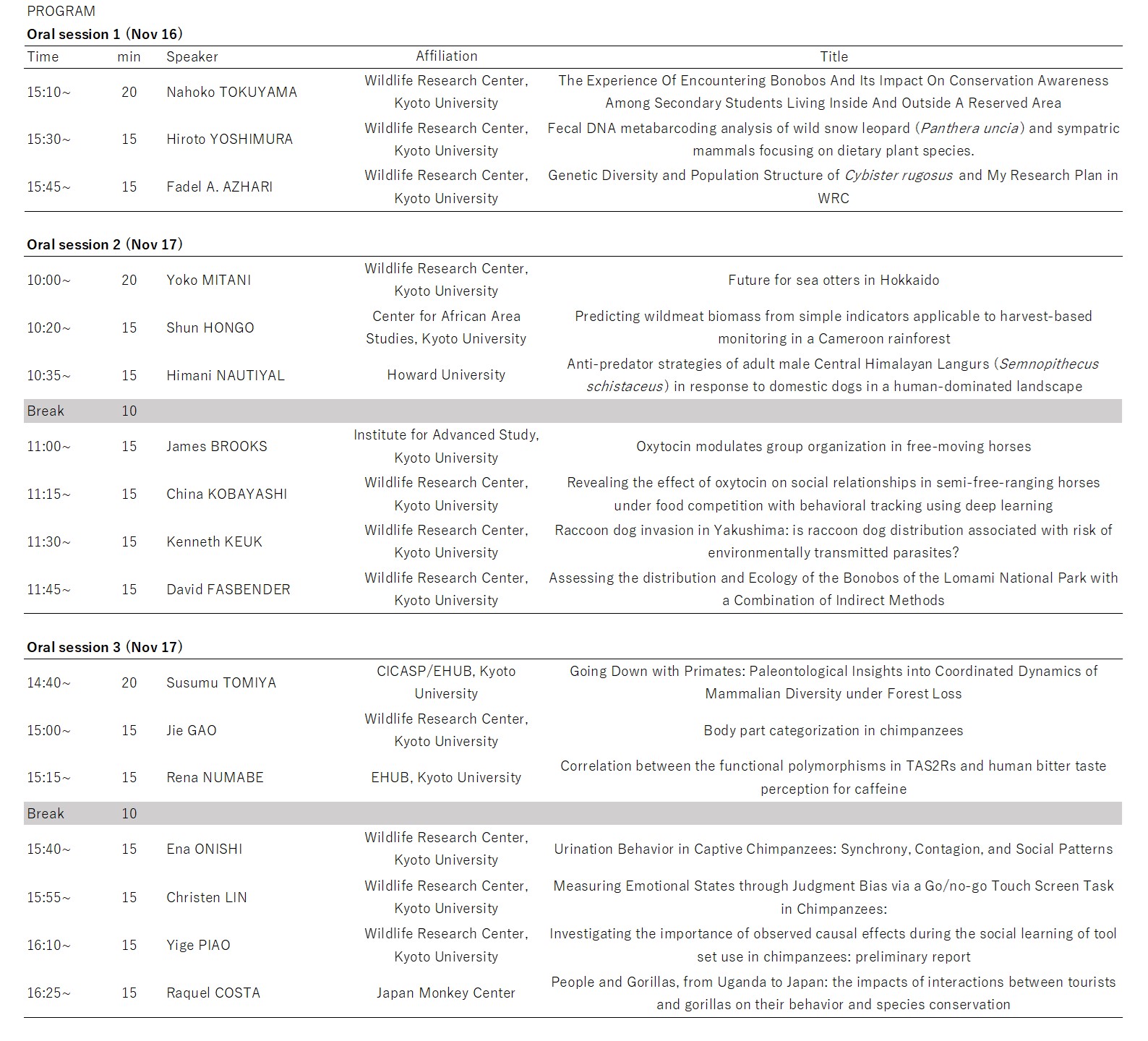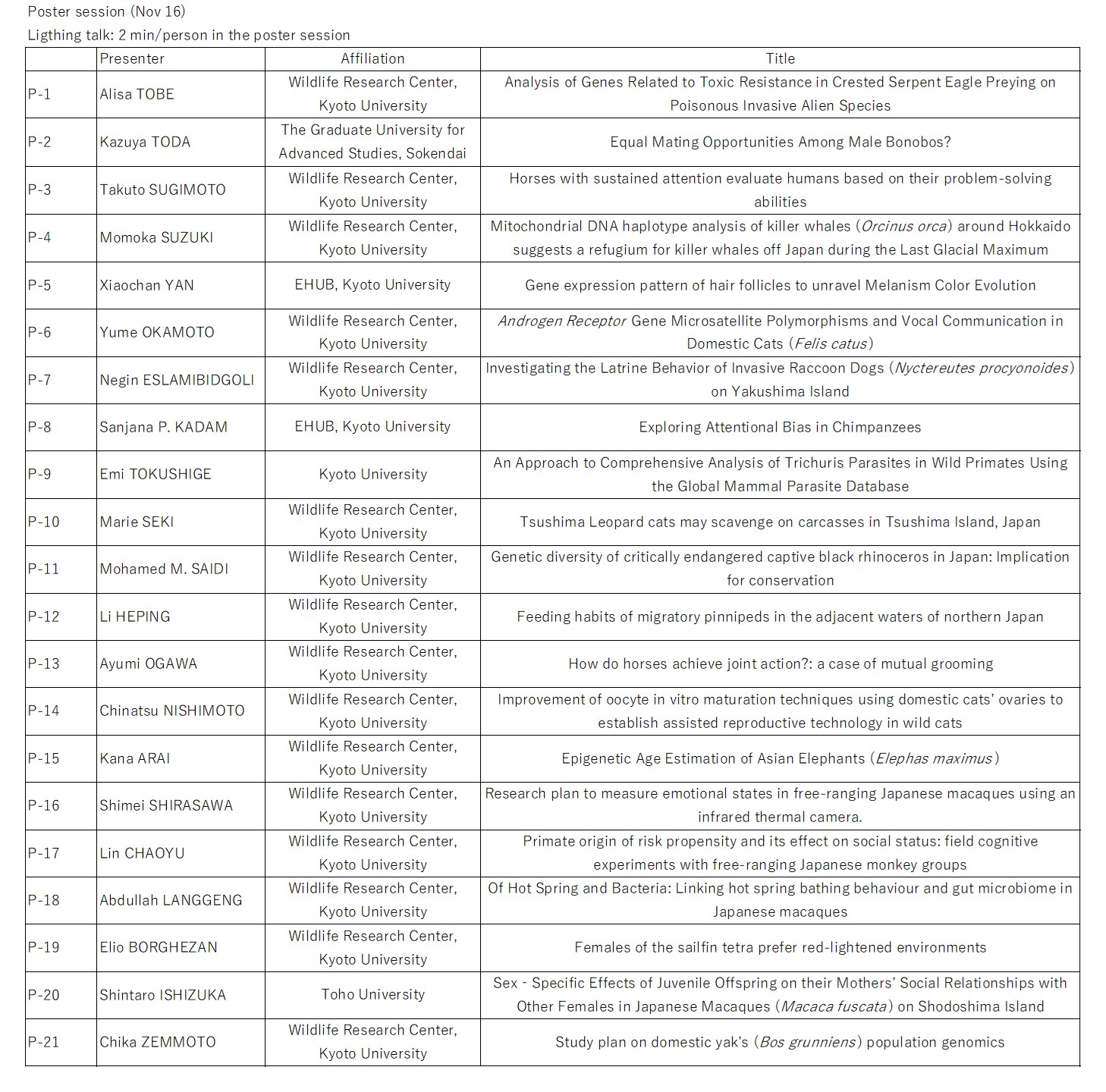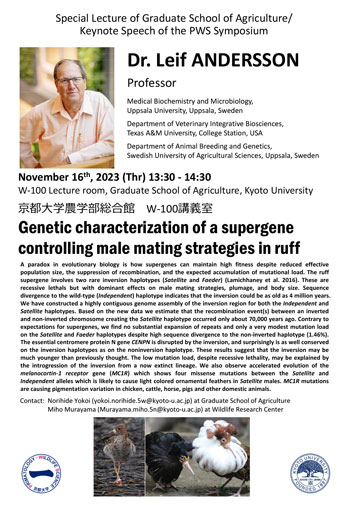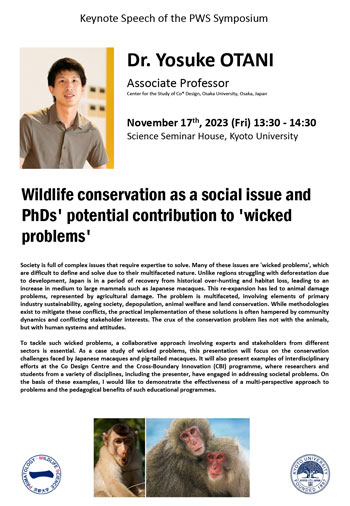Medical Biochemistry and Microbiology, Uppsala University, Uppsala, Sweden
Department of Veterinary Integrative Biosciences, Texas A&M University, College Station, USA
Department of Animal Breeding and Genetics, Swedish University of Agricultural Sciences, Uppsala,
Sweden
A paradox in evolutionary biology is how supergenes can maintain high fitness despite reduced
effective population size, the suppression of recombination, and the expected accumulation of
mutational load. The ruff supergene involves two rare inversion haplotypes (Satellite
and Faeder) (Lamichhaney et al. 2016). These are recessive lethals but with dominant effects on
male mating strategies, plumage, and body size. Sequence divergence to the wild-type (Independent)
haplotype indicates that the inversion could be as old as 4 million years. We have constructed a
highly contiguous genome assembly of the inversion region for both the
Independent and Satellite haplotypes. Based on the new data we estimate that the
recombination event(s) between an inverted and non-inverted chromosome creating the
Satellite haplotype occurred only about 70,000 years ago. Contrary to expectations for
supergenes, we find no substantial expansion of repeats and only a very modest mutation load on the
Satellite and Faeder haplotypes despite high sequence divergence to the
non-inverted haplotype (1.46%). The essential centromere protein N gene
CENPN is disrupted by the inversion, and surprisingly is as well conserved on the inversion
haplotypes as on the noninversion haplotype. These results suggest that the inversion may be much
younger than previously thought. The low mutation load, despite recessive lethality, may be
explained by the introgression of the inversion from a now extinct lineage. We also observe
accelerated evolution of the
melanocortin-1 receptor gene (MC1R) which shows four missense mutations between
the
Satellite and Independent alleles which is likely to cause light colored
ornamental feathers in Satellite males. MC1R mutations are causing pigmentation variation in
chicken, cattle, horse, pigs and other domestic animals.
References
- • Lamichhaney et al. 2016. Structural genomic changes underlie alternative reproductive
strategies in the ruff (Philomachus
pugnax). Nature Genetics 48:84-88. DOI
- • Schwochow et al. (2021) The feather pattern autosomal barring is strongly
associated with segregation at the
MC1R locus. Pigment Cell Melanoma Res. 34:1015-1028. DOI




